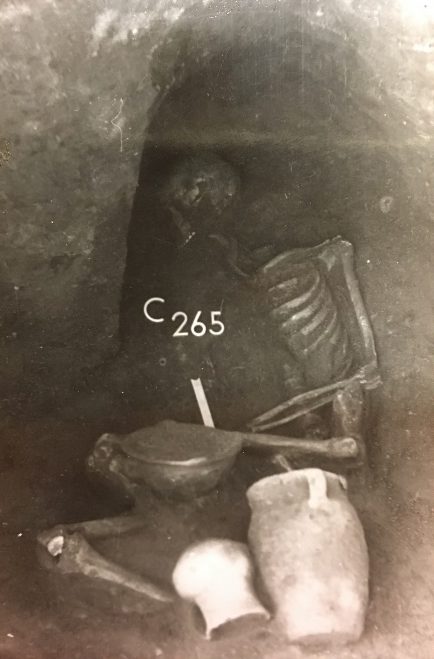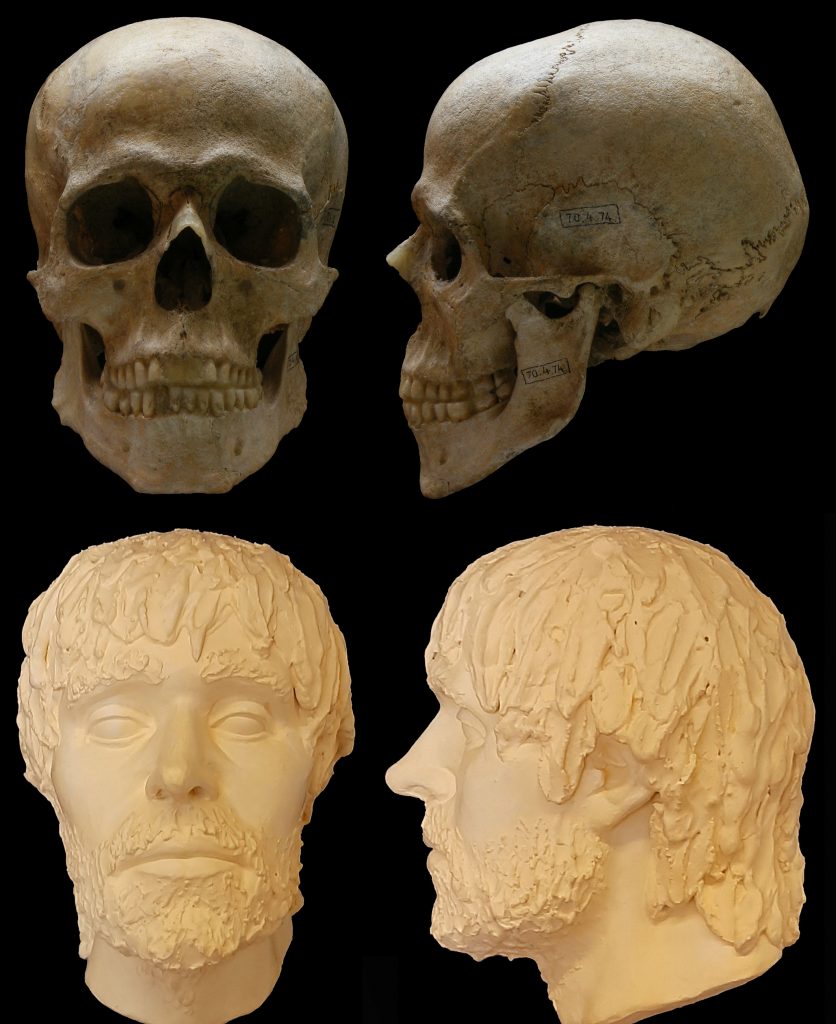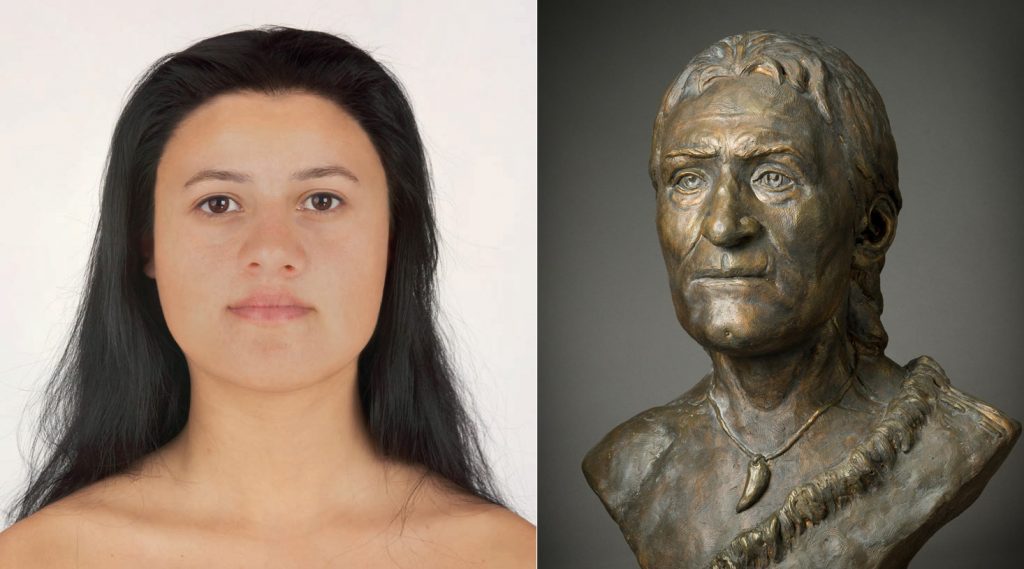Faces from the Bronze Age – the first Bronze Age facial reconstruction from Hungary in the new volume of Határtalan Régészet Journal
One of the modern trends in prehistoric archeology is the complex bioarcheological study of human remains excavated from graves, which is carried out within the framework of several domestically and internationally supported projects. It is important to “give a face” to the people of the Bronze Age during scientific processing. The study published in Határtalan Régészet (Boundless Archaeology) vol. 2020, issue 3 presents the details of the first Bronze Age facial reconstruction in Hungary and further artistic reconstructions based on human remains from contemporaneous Eurasian burials. The authors are scholars working for the Hungarian Natural History Museum, Eötvös Loránd University Department of Biological Anthropology, Eötvös Loránd University Institute of Archaeological Sciences, Institute of Archaeology Research Centre for the Humanities (Kustár et al. 2020).

Határtalan Régészet vol. 2020, issue 3
The first facial reconstruction from Bronze Age Hungary shows a man aged 25-35. His grave (D240 / C265) was excavated by Tibor Kovács at Tiszafüred-Majoroshalom. In the 1960s and 1970s, 1003 inhumations and cremation burials were unearthed at this site, dating from the Middle Bronze Age to the first phase of the Late Bronze Age. The studied grave can be linked to the population of the Late Bronze Age Tumulus Grave culture (16–14th century BC; Kovács 1975). Based on the measures of the skeleton, the estimated stature of the man could be around 171 cm. Postcranial bones indicate a robust body and intense physical activity. Physical anthropological analysis did not reveal any pathological alterations caused by illness or injury, so it is not yet possible to determine what caused his early death (Hajdu 2012).

D240 (C265) burial during the excavation at Tiszafüred-Majoroshalom (Hungarian National Museum)
Based on the skull, Ágnes Kustár made the facial reconstruction in 1996 for the permanent exhibition of the Hungarian Natural History Museum. The character of the face is determined by the unique features of the skull. The skull of the man from Tiszafüred is strong and masculine. The skull is almost square in front view and strongly articulated in lateral view. The surface of the occipital region indicates a strong, chunky neck muscle. The curved protruding bony eyebrow and the protruding region formed by the deeply indented nasal root give the face a slightly archaic character. The bridge of the nose is protruding, the profile of the nose is almost straight. Due to the incomplete but slightly upward-pointing anterior nasal spine the tip of the nose is slightly upward. The closure of the lower and upper dentures is wavy run, so the line of the mouth slopes in the direction of the corners of the mouth. The teeth are relatively large, the alveolar process is moderately protruding, so the lips are full. The strong, curved jaw tip indicate that the chin is strong and muscular. According to the grave goods, there was no information about hair style, so the man wears rich hair without a hairstyle and a short beard, marking the original outline of the chin (Kustár 1996).

The skull and the facial reconstruction of the man from Tiszafüred-Majoroshalom grave D240. (C265.) (Ágnes Kustár’s work, Hungarian Natural History Museum)
From the Eurasian Bronze Age further scientific facial reconstructions have been made in recent years by the sculptural anatomical method presented here and in some cases using state-of-the-art forensic approaches known from “CSI type” films such as genetic data on bodily traits for eye and hair color or the use of 3D graphics software (Khokhlov 2016; Hoole et al. 2017).

Faces from Bronze Age Eurasia: 3D facial reconstruction of Ava from Scotland (Bell Beaker culture, Achavanich site; Hew Morrison’s work; Hoole et al. 2017) and artistic facial reconstruction of a man from the Volga region (Yamnaya culture, Poludin grave 6; Aleksey Nehvaloda’s work, University of Coppenhagen)
With the help of facial reconstructions, we can gain an insight into the diversity of Bronze Age people who lived in a vast area stretching from the Urals through the Carpathian Basin to Scotland. For further details, see the original article in Határtalan Régészet (Kustár et al. 2020).
Ágnes Kustár – Tamás Hajdu – Kristóf Fülöp – Viktória Kiss
Acknowledgements
The study was supported by the Hungarian National Museum, the Hungarian Natural History Museum, the Department of Biological Anthropology of the Eötvös Loránd University, the Momentum Mobility Research Group of the Archaeological Institute, Research Centre for the Humanities, and NRDIO grant project no. FK128013.
References
Hajdu T.: A bronzkori Füzesabony- és halomsíros kultúra népességének biológiai rekonstrukciója. Anthropológiai Közlemények 53 (2012) 133-140.
Hoole, M., Sheridan, A., Boyle, A., Both, Th., Brace, S., Diekmann, Y., Olalde, I., Thomas, M. G., Barnes, I., Evans, J., Chenery, C., Sloane, H., Morrison, H., Fraser, S., Timpany, S., Hamilton, D.: ‘Ava’: a Beaker-associated woman from a cist at Achavanich, Highland, and the story of her (re-)discovery and subsequent study. Proceedings of the Society of Antiquaries of Scotland 147 (2017), 73–118.
Khokhlov, A. A.: Demographic and Cranial Characteristics of the Volga Ural Population int he Eneolithic and Bronze Age. In: Anthony, D. W., Brown, D. R., Khokhlov, A. A., Kuznetsov, P. F., Mochalov, O. D. (eds.): A Bronze Age Landscape in the Russian Steppes: The Samara Valley Project. Monumenta Archaeologica 37. Los Angeles 2016, 105-125.
Kiss V.: Megtestesült bronzkor. In: Ilon G. (szerk.): Régészeti nyomozások 2.0. Budapest 2019, 111–120.
Kovács T.: Tumulus culture cemeteries of Tiszafüred. Régészeti Füzetek II/17. Budapest 1975.
Kustár Á.: Arcrekonstrukciós katalógus. Budapest 1996. (http://www.nhmus.hu/hu/arcreko_katalog)
Kustár Á., Hajdu T., Fülöp K., Kiss V.: Arcok a bronzkorból. Határtalan Régészet Vol. 2020 Issue 3, 30–33.
Szombathy V.: Régészeti barangolások Magyarországon. Budapest 1978.








